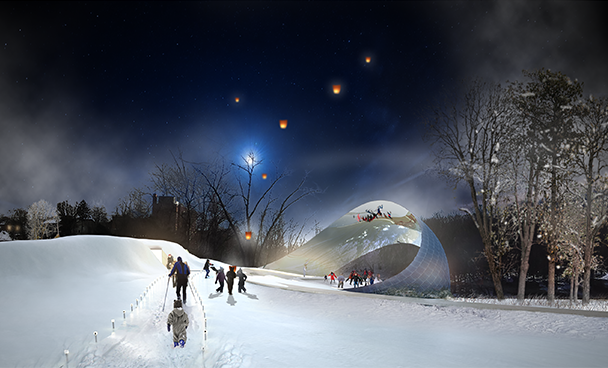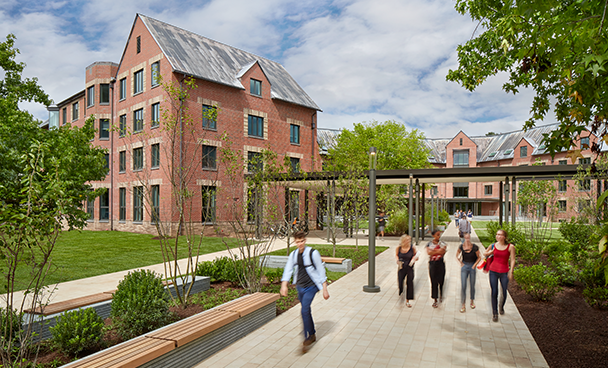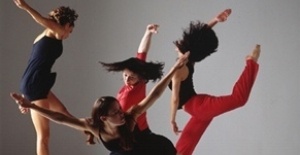One of the benefits of ‘Public Art’ as opposed to viewing a piece in a traditional museum setting is the ability to have a much higher level of personal interaction with a piece. While you can often walk around sculptures in a museum spaceto experience the three dimensional form, the look but don’t touch restrictions tend to limit how one can actually experience a piece.

This past Fall, I visited the West Hartford Art League’s facilities and had the opportunity to interact with two of the sculptures located on their grounds. “The Bear” designed by Peter Busby is a welded wire creation that from afar looks like a perfectly realistic bear walking through the meadow. With the increase in bear sightings in Connecticut, it is comforting to be able to see through the sculpture! The ability to see through it is actually one of its strengths from an experiential point of view. While one can easily interact with this sculpture at its broadest and most overall ‘I am a bear’ level, the fact that it is in a public space affords one the opportunity to see things in a much more subtle and detailed level. The flowing wire forms present a varying array of patterns moving with great energy throughout the form. It is even possible to become the bear from one particular angle. “The Bear” has a great view of Philip Grausman’s “Susan,” a large white fiberglass head overlooking the adjacent pond. As I peered through the sculpture, thoughts of eating a large marshmallow popped into my head. I wondered if the placement of “Susan” was specifically intended to be in the bear’s direct line of sight of or just a happy coincidence.
“Susan” with all of her subtle matte features does feel like a marshmallow as she gazes out over the green algae covered pond. The soft contours of her face and hair along with the finish invite a caress. You then realize that she is not made of solid marble but is hollow (fiberglass). She seems to be oblivious to the bear looking down at her from the hill behind. Perhaps the fact that she stands somewhere around eight feet tall including her pedestal gives her a sense of security.
If these two sculptures were located inside a traditional gallery or museum space, the level of interaction and appreciation for their subtle beauty might be lost or at least not fully revealed. Placing art where the public can view it 24/7 adds so much to our daily lives whether it is located in a park-like setting or an urban plaza. As we design our public spaces, provisions for the integration of public art should be considered (in some jurisdictions it is mandated). Partnerships with local galleries, museums or art associations can help facilitate art installations whether on a permanent or rotating basis if the outright purchase of art pieces is not financially feasible. By advocating for the provision of the physical spaces for the display of public art within projects, we increase the opportunities for both artists as well as the public.






